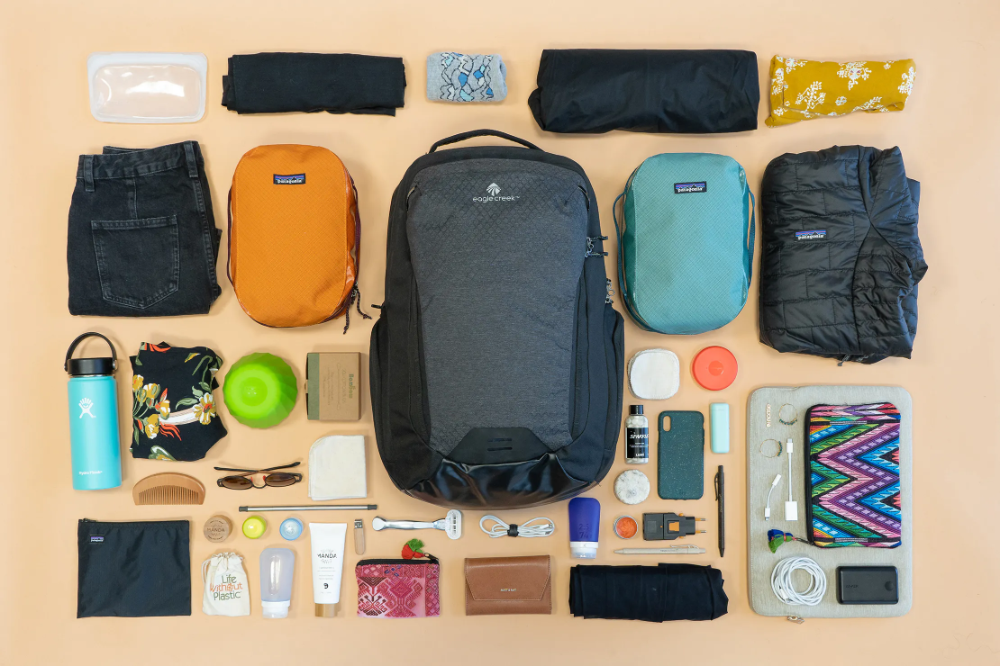Welcome to the exciting world of sustainable travel, where adventure meets responsibility!
In this comprehensive guide, we will delve into the key principles and practices of sustainable travel and explore how you can embark on eco-friendly adventures that leave a positive impact on our planet.
With a focus on travel, sustainability, and the green movement, we will reveal the secrets to responsible exploration, providing you with practical tips and inspiring insights to make your journeys more environmentally friendly.
Let’s dive in and uncover the incredible possibilities of sustainable travel!
The Essence of Sustainable Travel
When it comes to sustainable travel, it’s important to understand its essence and how it differs from conventional tourism.
Sustainable travel, also known as responsible or eco-friendly travel, emphasizes minimizing the negative impact on the environment, respecting local cultures, and supporting local economies.
It’s about travelling with intention and making conscious choices that prioritize the well-being of the planet and its inhabitants.
Key Features of Sustainable Travel
-
Minimizing Carbon Footprint: One of the core principles of sustainable travel is reducing carbon emissions. Opt for eco-friendly transportation modes such as trains or buses whenever possible, or consider offsetting your flight emissions through verified carbon offset programs.
-
Supporting Local Communities: Sustainable travel involves actively engaging with local communities and supporting their livelihoods. Stay in locally owned accommodations, eat at local restaurants, and purchase souvenirs made by local artisans to contribute to the local economy.
-
Preserving Natural Resources: Conservation of natural resources is crucial for sustainable travel. Respect protected areas, national parks, and wildlife sanctuaries by following designated trails, disposing of waste properly, and refraining from activities that harm the environment.
-
Cultural Respect and Awareness: Sustainable travel celebrates and respects diverse cultures. Prioritize learning about local customs, traditions, and etiquette, and interact with locals in a respectful and mindful manner. Be open to new experiences and appreciate the uniqueness of each destination.
What to Pack for Sustainable Travel
When embarking on a sustainable travel adventure, packing consciously is key.
By choosing the right items, you can minimize waste, reduce your carbon footprint, and support eco-friendly practices.
Here’s a comprehensive list of essential items to pack for a sustainable travel experience:
Reusable Water Bottle: Carry a durable, BPA-free water bottle to stay hydrated throughout your journey. Refilling it with tap water or at water stations helps reduce single-use plastic waste.
Eco-Friendly Toiletries: Opt for solid shampoo bars, conditioner bars, and soap instead of single-use plastic bottles. Use refillable containers for items like toothpaste, sunscreen, and lotions.
Reusable Utensils and Containers: Pack a set of reusable utensils, such as a bamboo or stainless-steel cutlery set, along with a compact food container for leftovers or takeaway meals. This helps reduce the use of disposable plastic cutlery and packaging.

Cloth Shopping Bag: Bring a lightweight, foldable shopping bag to carry groceries, souvenirs, or any other items you purchase during your travels. This eliminates the need for plastic bags and helps reduce waste.
Sustainable Clothing: Pack versatile and sustainable clothing options made from eco-friendly materials like organic cotton, hemp, or bamboo. Choose items that can be layered for different weather conditions and activities.
Reusable Coffee Cup: If you’re a coffee or tea lover, carry a reusable coffee cup or thermos to enjoy your favorite beverages on the go. This eliminates the need for disposable cups and reduces waste.

Solar-Powered Charger: Invest in a portable solar-powered charger to keep your electronic devices charged using renewable energy. This way, you can reduce reliance on electricity and contribute to a greener environment.
Eco-Friendly Snacks: Pack snacks in reusable containers or choose locally sourced, organic, and fair-trade snacks to support sustainable food practices. Avoid single-use plastic-wrapped snacks.
Travel Towel: Instead of bulky and environmentally unfriendly cotton towels, pack a quick-drying, lightweight travel towel made from microfiber or sustainable materials. These towels are compact and dry faster, minimizing water usage and energy consumption.

Eco-Friendly Laundry Kit: Bring an eco-friendly laundry detergent or soap bar to wash your clothes during extended trips. This allows you to reuse clothing items and reduce the need for excessive packing.
Sustainable Travel Guidebooks: Choose guidebooks or maps made from recycled materials or opt for digital travel guides and apps to minimize paper waste.
Portable Water Filter: If you’re traveling to areas with limited access to clean drinking water, a portable water filter can help purify water from natural sources. This reduces the need to purchase bottled water and helps minimize plastic waste.
Remember, the key to sustainable travel is packing thoughtfully and minimizing waste wherever possible.
Consider the longevity, eco-friendliness, and reusability of each item you bring along on your journey.
By adopting these practices, you’ll contribute to a greener planet and enjoy a more sustainable travel experience.
The Green Traveller’s Toolkit
To embrace sustainable travel fully, it’s essential to equip yourself with the right knowledge and tools.
Here are some key components of the green traveller’s toolkit:
Research and Planning: Before embarking on your journey, conduct thorough research about your destination’s sustainability initiatives, eco-friendly accommodations, and local conservation efforts. This will help you make informed choices that align with your sustainable travel goals.
Eco-friendly Accommodations: Look for accommodations that have implemented sustainable practices, such as using renewable energy, minimizing water consumption, and employing waste management strategies. Certifications like LEED (Leadership in Energy and Environmental Design) or Green Globe can guide you towards environmentally responsible options.
Sustainable Transportation: Opt for public transportation, cycling, or walking whenever feasible. If you need to rent a vehicle, choose hybrid or electric options. Additionally, carpooling and ridesharing platforms can help reduce the number of vehicles on the road.
Pack Light and Eco-friendly: Traveling light not only makes your journey more convenient but also reduces fuel consumption and carbon emissions. Pack reusable water bottles, eco-friendly toiletries, and reusable bags to minimize waste during your travels.

Inspiring Sustainable Travel Destinations
Now that you have a solid understanding of sustainable travel principles and the tools at your disposal, let’s explore some awe-inspiring destinations that exemplify green travel practices:
Costa Rica: Known for its commitment to environmental conservation, Costa Rica offers lush rainforests, biodiversity hotspots, and sustainable eco-lodges. Engage in activities like wildlife observation, nature hikes, and sustainable coffee tours that support local communities and protect the country’s natural treasures.
Iceland: With its geothermal energy, commitment to renewable resources, and geologically diverse landscapes, Iceland is a prime destination for green travellers. Explore its stunning waterfalls, geysers, and glaciers while learning about the country’s renewable energy initiatives.
New Zealand: A pioneer in eco-tourism, New Zealand boasts breath taking landscapes, including fjords, mountains, and pristine beaches. Engage in sustainable outdoor activities like hiking, wildlife encounters, and marine conservation projects while immersing yourself in Maori culture.
Bhutan: Known for its Gross National Happiness philosophy, Bhutan focuses on sustainable development and environmental preservation. Discover the country’s ancient monasteries, vibrant festivals, and breath taking Himalayan landscapes while supporting their low-impact tourism initiatives.
Embracing Sustainable Travel as a Lifestyle
Sustainable travel isn’t limited to a few trips; it’s a mindset that can be integrated into your everyday life. Here are some practical tips to incorporate sustainable travel into your lifestyle:
Reduce Single-Use Plastics: Carry a reusable water bottle, bamboo utensils, and a cloth shopping bag to minimize the consumption of single-use plastics in your daily life.
Support Local and Sustainable Products: Purchase locally sourced, organic, and fair-trade products whenever possible to reduce your carbon footprint and support sustainable businesses.
Advocate for Change: Use your voice to raise awareness about sustainable travel and encourage others to embrace eco-friendly practices. Share your experiences, tips, and insights through social media platforms, blogs, or community events.
Offsetting Your Carbon Footprint: Consider offsetting the carbon emissions from your everyday activities by supporting renewable energy projects or tree-planting initiatives.

Conclusion: Empowering Sustainable Explorations
By unravelling the secrets of sustainable travel, we’ve discovered that responsible exploration goes beyond sightseeing—it’s a transformative experience that connects us with the world while preserving it for future generations.
Through conscious choices, informed decisions, and a deep appreciation for the planet’s natural and cultural heritage, we can embark on green adventures that leave a lasting positive impact.
Let’s embrace the power of sustainable travel and become catalysts for change!
F.A.Q.
Q1: Is sustainable travel more expensive than traditional travel?
A1: While sustainable travel may require additional planning and research, it doesn’t necessarily have to be more expensive. By making conscious choices and supporting local businesses, you can often find affordable eco-friendly accommodations and transportation options.
Q2: How can I ensure the authenticity of eco-friendly accommodations?
A2: Look for certifications like LEED or Green Globe, which indicate that the accommodation has met specific sustainability criteria. Additionally, read reviews and check for transparent sustainability policies and initiatives on the accommodation’s website.
Q3: How can I offset my carbon emissions from air travel?
A3: Several organizations offer carbon offset programs where you can calculate your flight’s emissions and contribute to projects that reduce greenhouse gas emissions, such as renewable energy or reforestation projects.
Q4: What are some other ways to engage with local communities during sustainable travel?
A4: Participate in cultural activities, support local artisans and markets, dine at local restaurants, and consider volunteering with local conservation or community projects. Engaging with locals and respecting their traditions fosters meaningful connections and mutual understanding.
Q5: How can I support wildlife conservation during my travels?
A5: Opt for responsible wildlife encounters that prioritize animal welfare and conservation efforts. Avoid activities that involve animal exploitation or contribute to the illegal wildlife trade. Choose ethical wildlife sanctuaries or engage in conservation projects that actively protect and rehabilitate wildlife.
Disclaimer: The information provided in this blog is for educational purposes only. It is always recommended to research and verify the sustainability practices and local regulations

